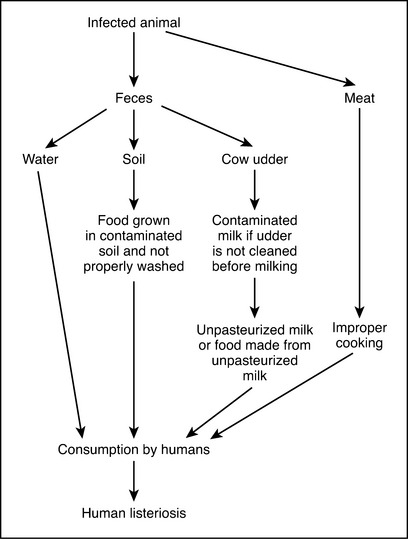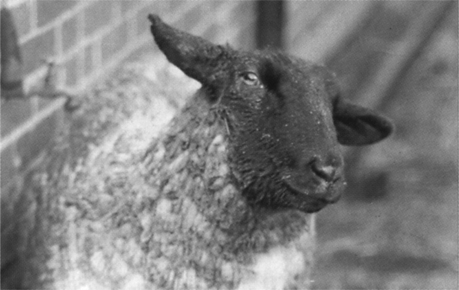LISTERIOSIS
Until the 1980s listeriosis was rarely reported in humans but was fairly common in animals. Since then, there have been increased reports of listeriosis in people. In animals listeriosis is also known as circling disease or silage disease.
TRANSMISSION
L. monocytogenes is spread from animal to animal via the fecal-oral route. An infected animal passes L. monocytogenes in its feces, which contaminates vegetation. A susceptible host eats the vegetation and becomes infected. Animals also get infected by eating contaminated silage and hay or by drinking contaminated water. People usually become infected with L. monocytogenes by eating food or drinking water that has been contaminated with feces that contain the organism. Some ready-to-eat foods become infected after they have been heat processed (Figure 24).
LISTERIOSIS IN ANIMALS
The organism enters the body through abrasions in the mouth and travels to the brain, where it causes unilateral encephalitis. The incubation period is about 10 days. The signs exhibited by an infected animal include depression, fever, and incoordination. Infected animals will segregate themselves into corners and frequently are seen leaning against a fence or building. An infected animal may start circling in one direction. The direction is determined by the side of the brain affected (Figure 25). If the facial nerve is affected, it will be unilateral and will be seen as a drooping ear, drooping eyelid, dilated nostril, drooping lower lip, tongue protrusion, excessive salivation, and difficulty eating. As the disease progresses, the animal becomes progressively paralyzed, will fall down on its side and paddle its legs as if running, enter into a coma, and eventually die. The mortality rate can be as high as 70% in sheep. Cattle seem to be a bit more tolerant, but the mortality rate can still reach 50%.
Stay updated, free articles. Join our Telegram channel

Full access? Get Clinical Tree




